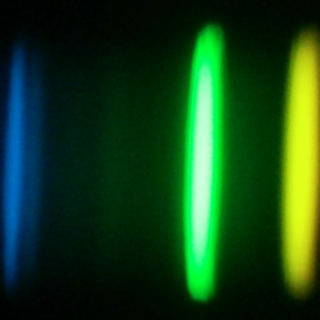Bibcode
Mészáros, Szabolcs; Bohlin, Ralph; Prieto, Carlos Allende; Cseh, Borbála; Kovács, József; Fleming, Scott W.; Dencs, Zoltán; Deustua, Susana; Gordon, Karl D.; Hubeny, Ivan; Mező, György; Truszek, Márton
Referencia bibliográfica
Astronomy and Astrophysics
Fecha de publicación:
8
2024
Revista
Número de citas
13
Número de citas referidas
10
Descripción
Context. The modeling of stellar spectra of flux standards observed by the Hubble and James Webb space telescopes requires a large synthetic spectral library that covers a wide atmospheric parameter range.
Aims: The aim of this paper is to present and describe the calculation methods behind the updated version of the BOSZ synthetic spectral database, which was originally designed to fit the CALSPEC flux standards. These new local thermodynamic equilibrium (LTE) models incorporate both MARCS and ATLAS9 model atmospheres, updated continuous opacities, and 23 new molecular line lists.
Methods: The new grid was calculated with Synspec using the LTE approximation and covers metallicities [M/H] from −2.5 to 0.75 dex, [$\alpha$/M] from −0.25 to 0.5 dex, and [C/M] from −0.75 to 0.5 dex, providing spectra for 336 unique compositions. Calculations for stars between 2800 and 8000 K use MARCS model atmospheres, and ATLAS9 is used between 7500 and 16 000 K.
Results: The new BOSZ grid includes 628 620 synthetic spectra from 50 nm to 32 µm with models for 495 Teff−log $g$ parameter pairs per composition and per microturbulent velocity. Each spectrum has eight different resolutions spanning a range from R = 500 to 50 000 as well as the original resolution of the synthesis. The microturbulent velocities are 0, 1, 2, and 4 km s−1.
Conclusions: The new BOSZ grid extends the temperature range to cooler temperatures compared to the original grid because the updated molecular line lists make modeling possible for cooler stars. A publicly available and consistently calculated database of model spectra is important for many astrophysical analyses, for example spectroscopic surveys and the determination of stellar elemental compositions.
Aims: The aim of this paper is to present and describe the calculation methods behind the updated version of the BOSZ synthetic spectral database, which was originally designed to fit the CALSPEC flux standards. These new local thermodynamic equilibrium (LTE) models incorporate both MARCS and ATLAS9 model atmospheres, updated continuous opacities, and 23 new molecular line lists.
Methods: The new grid was calculated with Synspec using the LTE approximation and covers metallicities [M/H] from −2.5 to 0.75 dex, [$\alpha$/M] from −0.25 to 0.5 dex, and [C/M] from −0.75 to 0.5 dex, providing spectra for 336 unique compositions. Calculations for stars between 2800 and 8000 K use MARCS model atmospheres, and ATLAS9 is used between 7500 and 16 000 K.
Results: The new BOSZ grid includes 628 620 synthetic spectra from 50 nm to 32 µm with models for 495 Teff−log $g$ parameter pairs per composition and per microturbulent velocity. Each spectrum has eight different resolutions spanning a range from R = 500 to 50 000 as well as the original resolution of the synthesis. The microturbulent velocities are 0, 1, 2, and 4 km s−1.
Conclusions: The new BOSZ grid extends the temperature range to cooler temperatures compared to the original grid because the updated molecular line lists make modeling possible for cooler stars. A publicly available and consistently calculated database of model spectra is important for many astrophysical analyses, for example spectroscopic surveys and the determination of stellar elemental compositions.
Full Table 3 is only available at the CDS via anonymous ftp to cdsarc.cds.unistra.fr (ftp://130.79.128.5) or via https://cdsarc.cds.unistra.fr/viz-bin/cat/J/A+A/688/A197
Proyectos relacionados

Abundancias Químicas en Estrellas
La espectroscopía de estrellas nos permite determinar las propiedades y composiciones químicas de las mismas. A partir de esta información para estrellas de diferente edad en la Vía Láctea es posible reconstruir la evolución química de la Galaxia, así como el origen de los elementos más pesados que el boro, forjados principalmente en los interiores
Carlos
Allende Prieto